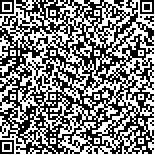| 本文已被:浏览 1094次 下载 403次 |

码上扫一扫! |
|
|
| 玉米种植面积对“镰刀弯”政策响应的时空差异与启示 |
|
陈芳鑫1,2, 邱炳文1,2, 陈佐旗1,2, 何玉花1,2, 黄莹泽1,2, 李宇1,2
|
|
1.福州大学空间数据挖掘与信息共享教育部重点实验室,福建福州350116;2.数字中国研究院(福建),福建福州350116
|
|
| 摘要: |
| [目的]研究“镰刀弯”政策影响下全国玉米变化规律,对优化农业种植结构至关重要。[方法]采用综合考虑植被物候和叶片水分变化的玉米制图方法,结合海拔、坡度、积温和降雨等不同环境因子分析“镰刀弯”地区玉米的时空变化特征。[结果]通过2 767个调研点位验证,总体精度达9082%,Kappa系数为086。[结论]2015—2018年全国玉米种植面积持续下降,减少约27948万hm2,比例下降64%,其中80%以上减少玉米集中在“镰刀弯”地区。4年来“镰刀弯”地区玉米减小面积近90%发生在东北冷凉区与北方农牧交错区。东北冷凉区玉米面积先减小后微弱增加,面积整体下降约117%,玉米减少主要发生在玉米种植面积大且较为密集的地区,而在海拔较高、积温低和降雨少等自然环境较差区域玉米相对减少比例更大,更易受政策影响。北方农牧交错区玉米种植面积持续下降,面积减少约135%,与其他环境因素相比,降雨不足对玉米种植变化的影响更大。综合考虑实地的自然环境因素,对“镰刀弯”政策的实施会更加有效。 |
| 关键词: 遥感玉米时空变化农业政策“镰刀弯”地区 |
| DOI: |
| 分类号:S511 |
| 基金项目:国家自然科学基金面上基金项目“面向地表参数演变过程的时序遥感变化检测技术暨三北工程评估”(41771468);国家自然科学基金面上基金项目“抗干扰的农作物种植模式自动提取方法”(41471362);福建省高校产学合作项目“农情高时效精准监测技术研究及应用”(2020N5101);福建省重点科技项目“遥感数据处理分析技术与卫星综合应用”(2017I0008) |
|
| SPATIOTEMPORAL DIFFERENCE AND ENLIGHTENMENT OF MAIZE PLANTING AREA RESPONSE TO "SICKLE BEND" POLICY |
|
Chen Fangxin1,2, Qiu Bingwen1,2, Chen Zuoqi1,2, He Yuhua1,2, Huang Yingze1,2, Li Yu1,2
|
|
1.Key Laboratory of Spatial Data Mining & Information Sharing of Ministry of Education, Fuzhou University, Fuzhou 350116, Fujian, China;2.Academy of Digital China, Fuzhou 350116, Fujian, China
|
| Abstract: |
| Studying the change rule of maize in China under the influence of "sickle bend" policy, is of great concern for optimizing agricultural production structure. The spatial and temporal variation characteristics of maize in "sickle bend" area were analyzed by using the maize mapping method which comprehensively considered vegetation phenology and leaf water variation and combined with different environmental factors such as altitude, slope, accumulated temperature and rainfall.The results were showed as follows. The overall accuracy reached 90.82% and Kappa coefficient was 0.86 through the verification of 2 767 survey points. From 2015 to 2018, the area of maize in China continued to decrease by about 2 794 800hm2, or 6.4%. More than 80% of the decreased maize was concentrated in the "sickle bend" area. In the past four years, nearly 90% of the decrease of maize area in "sickle bend" area occurred in the cold area of Northeast China and the agriculture and animal husbandry ecotone in North China.The area of maize in the cold area of Northeast China decreased first and then slightly increased, with the overall area decreasing by 11.7%. The decrease of maize mainly occurred in the area with large and dense maize planting area, while the maize in the area with poor natural environment, such as higher altitude, low accumulated temperature and less rainfall, decreased in a larger proportion and was more easily affected by the policy.The area of maize in the agriculture and animal husbandry ecotone in North China decreased by 13.5%.Compared with other environmental factors, lack of rainfall has a greater impact on maize planting.The implementation of the "sickle bend" policy will be more effective by taking into account the natural environmental factors in the field. |
| Key words: remote sensing maize spatiotemporal dynamics agricultural policy "sickle bend" area |

